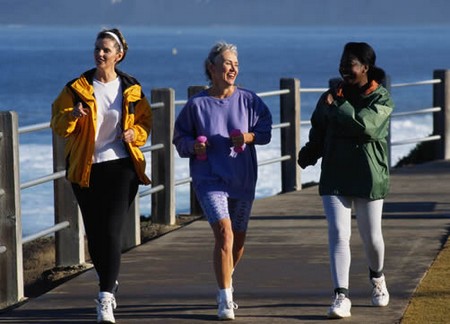Speed walking provides the same great cardiovascular workout as running. You get it without the extreme wear and tear on joints and muscles that jogging or running can cause. Speed walking is a good workout for people of any age, and it can be incorporated into a daily exercise routine easily and immediately In fact, you can do it even if you have not engaged in much cardio training in the past. In this article, we will discuss how to speed walk. We just recommend finding the right workout gear first, the clothes you wear for speed walking should be very comfortable. We suggest visiting websites like https://www.ryderwear.com/collections/mens-pants to find some great options!
Baseline:
Before you get faster, take some baseline measurements to see how fast you are now and where your heart rate is.
Measured mile: This is a good standard measurement. Use a local track or measure a mile with your car odometer. Time yourself in walking this mile after you have warmed up for 5-10 minutes of walking.
Heart rate: Knowing what heart rate you currently achieve while walking can help you set goals when you speed up. Warm up first by walking for at least 5 minutes. Then take your pulse while continuing to walk. Measuring for 30 seconds to a minute will give you better accuracy. Or, you may use a heart rate monitor.
Step 1:
Warm up: Stretching and starting out slowly are very important so that you do not strain or tear any muscles. Do several side bends or lean down toward the ground while counting slowly to ten. Repeat these stretches several times so that you are well warmed up.
Step 2:
Start walking: Treat your first 20 to 30 steps as part of your warm-up. Walk normally, relaxing your shoulders, swinging your arms and breathing deeply.
Step 3:
Lengthen your normal stride: Stretch your legs until your steps are longer than normal and you are covering more ground that you usually do with each step. This will bring your body lower to the ground and increase your speed.
Step 4:
Concentrate on arm movement: Speed walking requires steady, strong swings of the arms in order to help you maintain momentum and balance. Speed walkers tend to swing the left arm forward with the left leg, and the right arm with the right leg.
Step 5:
Pick up the pace: Once you are comfortable with your longer stride, start making your movements faster. At this point, you will start to feel the cardiovascular workout. You may become a little out of breath, but you should not be so winded that you have difficulty talking. If you have breathing trouble, stop immediately.
Step 6:
Cool down: Once you have completed your workout, cool down by taking 40 or 50 slower steps. Gradually decrease your speed. Keep walking normally until your breathing and heart rate have returned to normal.
